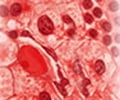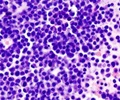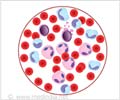Researchers have uncovered new genes that may help explain why 20 percent of children diagnosed with acute lymphoblastic leukemia ( ALL ) are
Researchers have uncovered new genes that may help explain why 20 percent of children diagnosed with acute lymphoblastic leukemia ( ALL ) are resistant to treatment with chemotherapy drugs.
According to researchers chemotherapy cures about 80 percent of ALL cases, but the remaining 20 percent have cancer cells that are resistant to chemotherapy drugs. In order to determine genetic predictors of ALL and the outcome researchers isolated leukemia cells from 173 newly diagnosed ALL patients and tested the cells’ sensitivity to four common chemotherapy drugs. They identified 124 genes that predict resistance to the drugs based on their expression patterns and it was found that the expression of the genes correlated with the likelihood of relapse years after treatment.It was seen that children who had resistant patterns of gene expression had a three- to 12-fold higher risk of relapse than those whose cells had a sensitive pattern. Researchers also say that the identified genes were involved in a wide range of functions including cell communication, proliferation and development as well as the metabolism of proteins, nucleic acids and carbohydrates.
Studies in the past have identified only three of the 124 genes to be linked with ALL resistance. Thus researchers say the genes uncovered in their recent study point to new targets for future chemotherapy. However, they say that future research needs to define whether the new target genes can be used to treat ALL patients. They also add that doctors might have to fine-tune chemotherapy for each patient.










